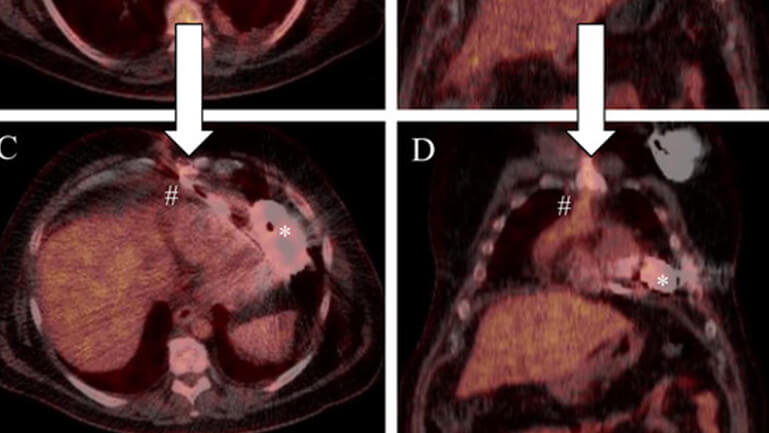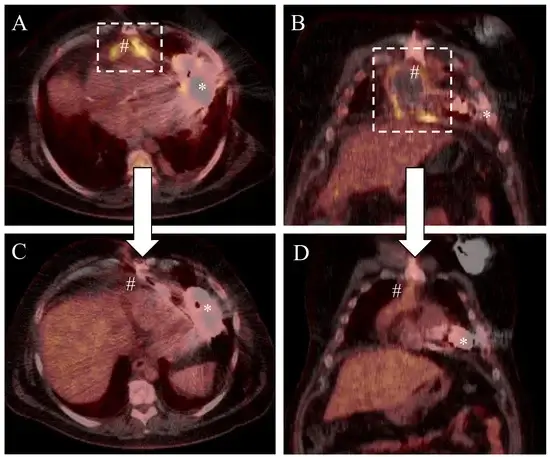General

We report a case of severe infection of the outflow graft after implantation of a left ventricular assist device (LVAD). A 51-year-old male LVAD patient was readmitted to our hospital and showed signs of systemic infection. One year earlier, an LVAD implantation (HeartMate3, Abbott, Chicago, IL, USA) with simultaneous open foramen ovale closure had been performed in connection with end-stage heart failure due to dilated cardiomyopathy (INTERMACS III). The indication for LVAD therapy was bridge-to-candidacy, as the patient did not immediately fulfill all the criteria for a heart transplant. On admission, a PET-CT scan showed fluid accumulation surrounding the outflow graft prosthesis (SUVmax 10.5) with contrast enhancement encompassing the intrathoracic driveline (SUVmax 11.2). As a heart transplant was not feasible, the patient underwent a surgical revision. The first step was a redo sternotomy with local debridement including jet lavage. Intraoperative swabs confirmed a bacterial infection with Staphylococcus aureus. The patient then underwent negative pressure wound therapy (NPWT) with instillation using the V.A.C. VERAFLO system (KCI-3M, San Antonio, TX, USA) for a total of 19 days. Due to the severity of the infection, a local application of bacteriophages was carried out within the wound closure. In order to concentrate phage therapy on the site of infection, phages with a novel semi-liquid galenic were applied. After wound closure, the patient was discharged with no complications. A control PET-CT scan 3 months after discharge showed a significant reduction in infection (outflow graft: SUVmax 7.2, intrathoracic drive line: SUVmax 3.0), which correlated with contrast enhancement. Bacterial infection of intrathoracic VAD components is a serious and potentially life-threatening complication. If a heart transplant is not feasible, complex wound treatment strategies are required. Local bacteriophage therapy could be a promising addition to already established therapeutic options. To improve the retention of bacteriophages at the wound site, the use of a viscous galenic may be beneficial.
